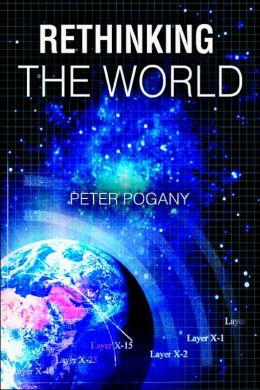I find Nathan John Hagens’ concept of the Superorganism (borrowed from John Gowdy, I believe), combined with Daniel Schmachtenberger’s concept of Hyper Agents to be super insightful and super important.
Listen closely to their recent discussion within the context of HT Odum‘s Maximum Power Principle. Schmachtenberger explains that Hyper Agents are both a product of (bottom up) the Superorganism, and help shape the performance of the Superorganism (top down). As the system has been breaking down for some time now, with the wheels starting to fall off, the scales are falling from the eyes. More and more folks are starting to see it. If you’ve been exposed to concepts such as The Egregore (BJ Campbell), The Swarm (John Robb), The Autocult (Patrick Ryan), The Blue Church (Ryan and Jordan Hall), The Machine (Paul Kingsnorth), Fully Automated Luxury Gnosticism (Mary Harrington), World Order (Alfred McCoy) and Beyond Regulatory Capture (Brett Weinstein), you might have a clue as to what I’m talking about. Check out this video: Swarms, Egregores, and Autocults.
Of all of these frames and metaphors, I believe “the superorganism” is one of the best, as it connects the dots to the concept of a self-organizing “dissipative structure” (Ilya Prigogine) that is tied to a growth oriented economy, and will not voluntarily give up on the idea of growth economics. Rather, the change will come about only by the changing circumstances of our life world.
This was also a key concept for integrative economist Peter Pogany. His frame was what he called “Global Systems” – self-organizing thermodynamic dissipative structures that have come to exist on a global level, and which have already seen two iterations. Chapter 6 of Rethinking the World (2006) by Peter Pogany, is about ‘cultural evolution;’ specifically “The Brain’s Central Role in Cultural Evolution.”
“Each global system creates its characteristic behavior, connected with a lexicon, a socioeconomically induced emotional profile, an ethic, a Weltanschauung, and a mentality. These are physically ‘imprinted’ in brains and endure roughly as long as the global system does.” [a number of these words found in the Glossary in the back of the book – a very helpful guide in defining about 80 terms that Pogany uses in unique ways]
One way Pogany describes cultural evolution and world history is as a “neuropsychiatric healing process” (p. 153). But this healing process is thrown into doubt during chaotic transitions when the collective mind begins searching for the blueprint for the next stable condition.
That we are in such a chaotic transition right now is evidenced by what is being called “the meaning crisis” or “the epistemic crisis,” or “the post-truth era.” We are floundering in trying to find common ground with one another. As a result, we see more conflicts between in-groups and out-groups; more conflicts within in-groups; more disarray as previously aligned groups split apart and what we consider to be “left” or “right” becomes confused and switched. And hence increased conflict and finger pointing and muddled thinking, as we can see around these issues of CRT, cancel culture, conspiracy theory, generational conflicts, etc.
Pogany:
“Socioeconomic evolution is unthinkable without ‘experimental behavior’ that fails miserably at the beginning. In addition to the individually chosen ‘voluntarily experimental behavior,’ there is ‘involuntary, group experimental behavior.’ Some alternatives to the defunct world order (GS1) made it into statehood during the global transformation, coaxing out or forcing accommodative responses. What seemed normal and permanent in the species-wide self-destructive search phase turned out to be failed historical experiments, to personal disadvantage on a massive scale” (p. 155).
In regards to the title of the book, “Rethinking the World”:
Wrapping up chapter 6:
“From the point of view of the world as a whole, the multiple, simultaneous efforts to determine meanings produced confusion. The world was thinking amidst its self-destructive systemlessness; it was rethinking itself…
The establishment of the lexicon begins before its presence is universally recognized. Some of its remnants linger after it is gone… Through the nested layers of adaptations of the global system, the lexicon becomes diffused and concealed in the practice of daily life… But on the whole, the global system’s text tends to make people forget about the historical nature and the mortality of the global system. Radical, effective reality clouds the underlying absolute reality of transcience.
…Of course, lexicons have never been assembled. But there is no need for a fully completed and bound handbook. (We know that we live by ‘social contracts’ even if none of us remembers signing one.)” (p. 169-170)
“Macrohistory suggests that only a new global transformation will be able to clear the road for a future that does not roll out the red carpet to cultural devolution. What gives us pause is that, if it took “1914-1945″ (circa 70 million dead, many millions maimed, and the hardships of the Great Depression) to move the world from the most primitive form of socioeconmic self-organization to a more ordered one (a relatively minor qualitative adjustment), it staggers the imagination to contemplate what it might entail to go from ‘here’ to the ‘world-as-self.’ (p. 182-183).”
Please see my tab dedicated to Peter Pogany.
